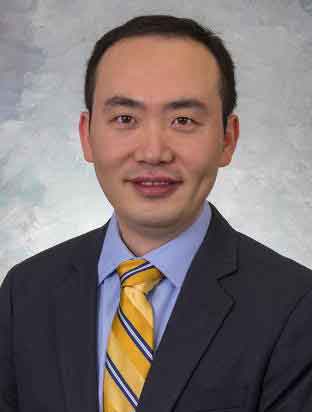Team of Rogel researchers receive $3.4M grant to detect high-risk oral pre-cancers
Media contact: Nicole Fawcett, 734-764-2220 | Patients may contact Cancer AnswerLine™ 800-865-1125
 Credit: Getty Images
Credit: Getty ImagesWith a new $3.4 million grant from the National Cancer Institute, a team of Rogel Cancer Center researchers will develop new tools to detect changes in precancerous lesions that are likely to become oral cancers. When detected early, this type of head and neck cancer can be curable.
Most of these precancerous lesions do not progress to cancer, but no good methods currently exist to identify which lesions pose the highest risk of cancer.
“Before we can deploy impactful early detection technologies, we must improve our understanding of the biology of high-risk oral epithelial dysplasias,” said the contact principal investigator Yu Leo Lei, D.D.S., Ph.D., associate professor of dentistry and otolaryngology at the University of Michigan.

This award allows the principal investigators to join the National Cancer Institute’s Early Detection Research Network Steering Committee, currently co-chaired by Arul Chinnaiyan, M.D., Ph.D., director of the Michigan Center for Translational Pathology at U-M, and the National Institute of Dental and Craniofacial Research’s Advancement of Head and Neck Cancer Early Detection Research (AHEAD) Steering Committee, currently co-chaired by Lei. The EDRN/AHEAD initiatives aim to discover and validate high-risk biomarkers to improve cancer prevention.
Lei also serves on the steering committee of the NCI/NIDCR’s Biden Cancer Moonshot Immuno-Oncology Translational Network and is developing robust immunoprevention strategies for oral cancer.
Rogel researchers developed mouse models to reflect the immune and mechanical alterations that develop as the lesions become cancer. This allowed them to discover an initial set of immunometabolic markers whose signals emerge before other signs of cancer. They’ll use this data to develop a comprehensive set of high-risk features and a weighted risk score.
In addition, the investigators developed an optical biopsy tool, approved by the U.S. Food and Drug Administration, to perform non-invasive monitoring of molecular markers at a microscopic resolution below oral mucosal surfaces.
“Oral cavity cancers are preventable if diagnosed early. But it is challenging to maintain high-frequency clinical follow-ups for every patient with these very common precursor lesions, most of which will never become cancers,” said co-principal investigator Steven Chinn, M.D., M.P.H., assistant professor of otolaryngology at Michigan Medicine.
“By combining these technologies, we hope to capture high-risk oral dysplasias at the earliest phase and prevent them from developing into head and neck cancers,” said co-principal investigator Thomas Wang, M.D., Ph.D., H. Marvin Pollard Collegiate Professor of Endoscopy Research and professor of gastroenterology, biomedical engineering and mechanical engineering at U-M.
